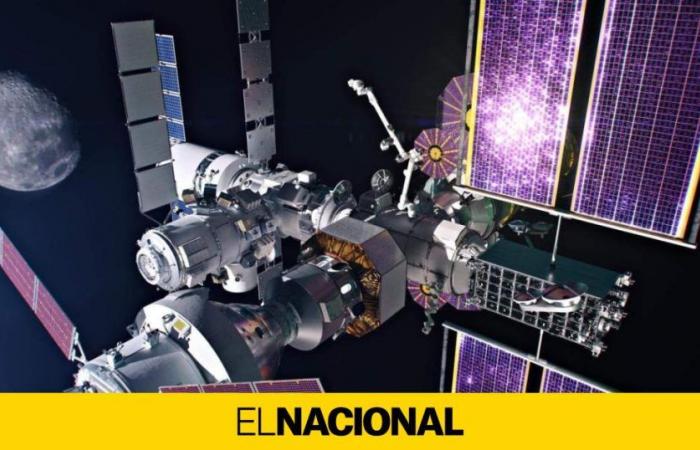Gateway will be humanity’s first space station in lunar orbit and will serve as an essential element of the missions NASA’s Artemiswho wants to take man back to the Moon 50 years later, and also to the first woman and the first person of African descent. The United States space agency leads this international space program in which half a dozen space agencies participate, including the European one, and a large number of private companies to explore deep spaceestablish a sustainable presence on the surface and in lunar orbit, make scientific discoveries, establish the foundations of a lunar economy and, as NASA says, be the inspiration for a new generation of explorers, the Artemis generation. after the mission Artemis III that will land the first people near the south pole of the Moon, astronauts of Artemis IV, in 2028will live and work on humanity’s first lunar space station, Gatewaywhich will allow new opportunities for science and preparation for human missions on Mars. But what is Gateway like? NASA has made public a 3D animation video in which it gives details of what this great lunar station will be like, which has to become the home of astronauts in deep space.
A structure in modules
Gateway It will be the logistics center for the new exploration and future colonization of the Moon. Today, NASA has the structural concepts and initial designs, based on modules of the International Space Station (ISS), which offers flexibility and the ability to extend based on mission requirements during its service life. Gateway is considered the technological successor to the ISS. Construction tasks will begin in 2025, and the platform will have several pieces, according to the information made public to NASA. Its components include a powerful thruster that will operate using solar energy, a control center to transmit communications between Earth and the lunar surface, life support systems, storage of different types of payloads and spacecraft.
- HALO (Habitation and Logistics Outpost): It is one of the Gateway modules where astronauts will live, do experiments and prepare for missions on the lunar surface. It will include the station’s command and control nexus, which provides communications between Earth and the lunar surface with the Lunar Link system provided by ESA (European Space Agency). HALO will also house life support systems, including exercise equipment and scientific payload banks. The main structure of the HALO is one step closer to launch after the completion of welding in Turin, Italy. NASA has partnered with Northrop Grumman and subcontractor Thales Alenia Space to develop HALO.
- Power and Propulsion Element (PPE): This system will make Gateway the most powerful solar electric spacecraft ever built. The module will use energy from the Sun to power the space station’s subsystems and ionize xenon gas to produce the thrust that will maintain Gateway’s unique polar orbit around the Moon. The unique lunar orbit of NASA’s Gateway space station will provide Artemis astronauts and their spacecraft access to the entire lunar surface, including the critical region of the lunar south pole that is the focus of the Artemis missions. It will also offer unique scientific opportunities within the deep space environment.
- Lunar I-Bed: Provided by ESA (European Space Agency) with hardware contributions from JAXA (Japan Aerospace Exploration Agency), it will house environmental control and life support systems, bedrooms and a kitchen, among other features.
- LunarView: Provided by ESA, it will have refueling capabilities for the power and propulsion element, cargo storage and large windows.
- Crew and Science Airlock: Provided by the Mohammad Bin Rashid Space Center of the United Arab Emirates, it is the area for the transfer of crew and hardware from inside Gateway to the vacuum of space.
- Advanced external robotic system ‘Canadarm3’ provided by CSA (Canadian Space Agency).
- Deep Space Logistics spacecraft: will transport cargo to the Gateway to support the Artemis missions.






